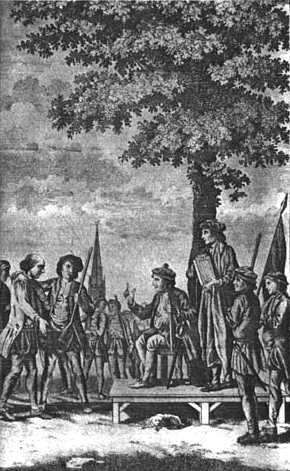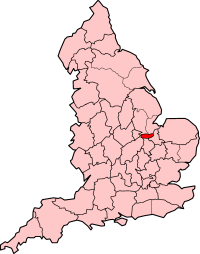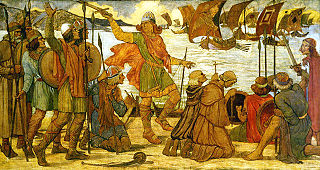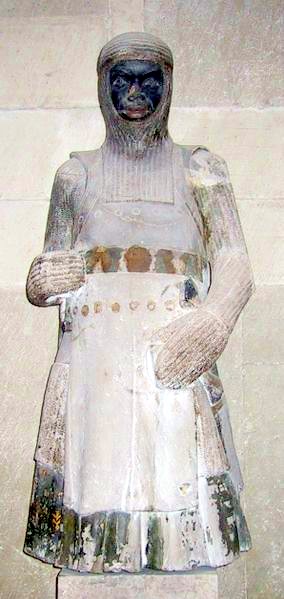Related Research Articles

Chain mail is a type of Armour consisting of small metal rings linked together in a pattern to form a mesh. It was in common military use between the 3rd century BC and the and 16th century AD in Europe, while continued to be used in Asia, Africa, and the Middle East as late as the 17th century. A coat of this Armour is often called a hauberk or sometimes a byrnie.

The Second Amendment to the United States Constitution protects the right to keep and bear arms. It was ratified on December 15, 1791, along with nine other articles of the Bill of Rights. In District of Columbia v. Heller (2008), the Supreme Court affirmed for the first time that the right belongs to individuals, for self-defense in the home, while also including, as dicta, that the right is not unlimited and does not preclude the existence of certain long-standing prohibitions such as those forbidding "the possession of firearms by felons and the mentally ill" or restrictions on "the carrying of dangerous and unusual weapons". In McDonald v. City of Chicago (2010) the Supreme Court ruled that state and local governments are limited to the same extent as the federal government from infringing upon this right. New York State Rifle & Pistol Association, Inc. v. Bruen (2022) assured the right to carry weapons in public spaces with reasonable exceptions.

Baron is a rank of nobility or title of honour, often hereditary, in various European countries, either current or historical. The female equivalent is baroness. Typically, the title denotes an aristocrat who ranks higher than a lord or knight, but lower than a viscount or count. Often, barons hold their fief – their lands and income – directly from the monarch. Barons are less often the vassals of other nobles. In many kingdoms, they were entitled to wear a smaller form of a crown called a coronet.

A hauberk or byrnie is a shirt of mail. The term is usually used to describe a shirt reaching at least to mid-thigh and including sleeves. Haubergeon generally refers to the quilted undergarment used with a hauberk, but the terms are sometimes used interchangeably.

Robert Kett was the leader of Kett's Rebellion.

Esquire is usually a courtesy title.

The Soke of Peterborough is a historic area of England associated with the City and Diocese of Peterborough, but considered part of Northamptonshire. The Soke was also described as the Liberty of Peterborough, or Nassaburgh hundred, and comprised, besides Peterborough, about thirty parishes.

The Battle of the Standard, sometimes called the Battle of Northallerton, took place on 22 August 1138 on Cowton Moor near Northallerton in Yorkshire, England. English forces under William of Aumale repelled a Scottish army led by King David I of Scotland.

The Statutes of Mortmain were two enactments, in 1279 and 1290, passed in the reign of Edward I of England, aimed at preserving the kingdom's revenues by preventing land from passing into the possession of the Church. Possession of property by a corporation, such as the Church, was known as mortmain, which literally meant "dead hand". In medieval England, feudal estates generated taxes for the King, principally on the grant or inheritance of the estate. If an estate became owned by a religious corporation which could never die, could never attain majority, and could never be attainted for treason, these taxes never became payable. It was akin to the estates being owned by the dead, hence the term.

Knowledge about military technology of the Viking Age is based on relatively sparse archaeological finds, pictorial representations, and to some extent on the accounts in the Norse sagas and laws recorded in the 12th–14th century.

Quia Emptores is a statute passed by the Parliament of England in 1290 during the reign of Edward I that prevented tenants from alienating their lands to others by subinfeudation, instead requiring all tenants who wished to alienate their land to do so by substitution. The statute, along with its companion statute Quo Warranto also passed in 1290, was intended to remedy land ownership disputes and consequent financial difficulties that had resulted from the decline of the traditional feudal system in England during the High Middle Ages. The name Quia Emptores derives from the first two words of the statute in its original mediaeval Latin, which can be translated as "because the buyers". Its long title is A Statute of our Lord The King, concerning the Selling and Buying of Land. It is also cited as the Statute of Westminster III, one of many English and British statutes with that title.

Knight-service was a form of feudal land tenure under which a knight held a fief or estate of land termed a knight's fee from an overlord conditional on him as a tenant performing military service for his overlord.
A free warren—often simply warren—is a type of franchise or privilege conveyed by a sovereign in medieval England to an English subject, promising to hold them harmless for killing game of certain species within a stipulated area, usually a wood or small forest. The sovereign involved might be either the monarch or a marcher lord.

The Treaty of Falaise was a forced written agreement made in December 1174 between the captive William I, King of Scots, and Henry II, King of England.

A coat of plates is a form of segmented torso armour consisting of overlapping metal plates riveted inside a cloth or leather garment. The coat of plates is considered part of the era of transitional armour and was normally worn as part of a full knightly harness. The coat saw its introduction in Europe among the warring elite in the 1180s or 1220s and was well established by the 1250s. It was in very common usage by the 1290s. By the 1350s it was universal among infantry militias as well. After about 1340, the plates covering the chest were combined to form an early breastplate, replacing the coat of plates. After 1370, the breastplate covered the entire torso. Different forms of the coat of plates, known as the brigandine and jack of plates, remained in use until the late 16th century.
In English law, the assize of novel disseisin was an action to recover lands of which the plaintiff had been disseised, or dispossessed. It was one of the so-called "petty (possessory) assizes" established by Henry II in the wake of the Assize of Clarendon of 1166; and like the other two was only abolished in 1833.
In English law, the assize of mort d'ancestor was an action brought where a plaintiff claimed the defendant had entered upon a freehold belonging to the plaintiff following the death of one of his relatives. The questions submitted to the jury were, "was A seised in his demesne as of fee on the day whereon he died?" and "Is the plaintiff his next heir?" This assize enabled the heir to obtain possession, even though some other person might have a better right to the land than the deceased.
The Exchequer of the Jews was a division of the Court of Exchequer at Westminster which recorded and regulated the taxes and the law-cases of the Jews in England and Wales. It operated from the late 1190s until the eventual expulsion of the Jews in 1290.

The Tale of Gamelyn is a romance written in c. 1350 in a dialect of Middle English, considered part of the Matter of England. It is presented in a style of rhymed couplets and described by Skeat as "the older and longer kind of ballad" and by Ramsey as a "rough and ready romance."
In the United States, the right to keep and bear arms is a fundamental right protected by the Second Amendment to the United States Constitution, part of the Bill of Rights, and by the constitutions of most U.S. states. The Second Amendment declares:
A well regulated Militia, being necessary to the security of a free State, the right of the people to keep and bear Arms, shall not be infringed.
References
- ↑ Haughton, Thomas (1887). The Student's Summary of the Principal Events in English History with Notes. G. Philip & son. pp. 78–. Retrieved 2 January 2014.
- 1 2 Schwoerer, Lois G. (2000). "To Hold And Bear Arm: The English Perspective" (PDF). Chicago-Kent Law Review. Archived from the original (PDF) on 2008-03-18.
There was no ancient political or legal precedent for the right to arms. The Ancient Constitution did not include it; it was neither in Magna Charta 1215 nor in the Petition of Right 1628. No early English government would have considered giving the individual such a right. Through the old militia laws —Henry II's Assize of Arms (1181) and Edward I's Statute of Winchester (1285)— early governments had imposed a responsibility on subjects, according to their income, to be prepared
- ↑ Weir, William (1997). A well regulated militia. Hamden, Conn: Archon Books. p. 5. ISBN 978-0-208-02423-7.
- ↑ Ely, James W.; Bodenhamer, David J. (2008). The Bill of Rights in modern America. Bloomington: Indiana University Press. p. 73. ISBN 978-0-253-35159-3.
- ↑ Taylor, Hannis (1911). The origin and growth of the American Constitution. Boston: Houghton Mifflin. p. 232.
- ↑ Cottrol, Robert J. (1994). Gun control and the Constitution: sources and explorations on the Second Amendment. New York: Garland Pub. p. xii. ISBN 978-0-8153-1666-4.
- ↑ Supreme Court finding in District of Columbia v. Heller.
- Stubbs, Select Charters, pp. 183 f. (Latin)
- Full text at Google Books